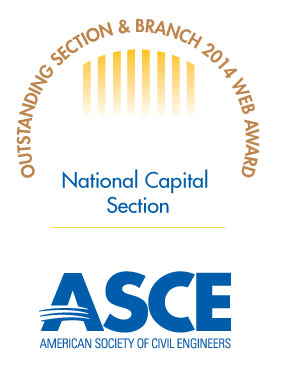The Smithsonian Castle Renovation: Seismic Isolation
Click HERE for the registration link.
 The Smithsonian Institution Building (SIB), also known as “The Castle”, is the original home of the Smithsonian and the Institution’s signature building, located prominently on the National Mall in Washington, DC. The building designed by James Renwick Jr., originally opened in 1855, and has subsequently seen many modifications, reconstructions, and repairs over the years. Many of the recent repairs have been in response to the Mineral Earthquake in 2011, the epicenter of which was located approximately 90 miles from DC. During the earthquake, the unreinforced masonry of the Castle suffered damage including the collapse of chimneys, displacement of finials, and cracking in the towers. The Castle is now undergoing its first significant renovation and restoration in over 50 years with the Revitalize Historic Core project. Given the high cultural significance of the building as an artifact itself of the Smithsonian and the extent of damage incurred in the 2011 earthquake, the building will be structural retrofit for upgraded seismic design using base isolation. The isolators will decouple the building from the movement of the earth under a seismic event, and significantly reduce the movements and accelerations of the building and towers relative to a fixed base building.
The Smithsonian Institution Building (SIB), also known as “The Castle”, is the original home of the Smithsonian and the Institution’s signature building, located prominently on the National Mall in Washington, DC. The building designed by James Renwick Jr., originally opened in 1855, and has subsequently seen many modifications, reconstructions, and repairs over the years. Many of the recent repairs have been in response to the Mineral Earthquake in 2011, the epicenter of which was located approximately 90 miles from DC. During the earthquake, the unreinforced masonry of the Castle suffered damage including the collapse of chimneys, displacement of finials, and cracking in the towers. The Castle is now undergoing its first significant renovation and restoration in over 50 years with the Revitalize Historic Core project. Given the high cultural significance of the building as an artifact itself of the Smithsonian and the extent of damage incurred in the 2011 earthquake, the building will be structural retrofit for upgraded seismic design using base isolation. The isolators will decouple the building from the movement of the earth under a seismic event, and significantly reduce the movements and accelerations of the building and towers relative to a fixed base building.
The Smithsonian has elected for this enhanced seismic design approach to protect the Castle not just for an ordinary building’s service life, but in perpetuity against a seismic event of a nearly 2500-year return period.
Base Isolation has been used on a number of west coast historic and landmark buildings in the United States, but the Castle will be a landmark example of a seismic retrofit using base isolation on the east coast. Though DC is a traditionally low seismic zone, the geometry of the Castle, with slender projecting towers and chimneys built of unreinforced masonry, make this building particularly sensitive to amplified accelerations from ground movements. Prior design studies for the project investigated using traditional retrofit measures, such as concrete shear walls or steel brace frames installed inboard of the existing masonry walls. These options were both more destructive to historic fabric, especially at the towers, and could not achieve the same enhanced seismic performance feasible with base isolation. By incorporating the technology of base isolation, and by using modern nonlinear dynamic analysis procedures for nuanced evaluation, the building can be seismically retrofit to meet the Smithsonian’s intended enhanced performance objectives in a way that allows for a more sensitive approach to historic preservation.
The Castle is a designated National Historic Landmark. It is listed in the National Register of Historic Places and is part of the National Mall Historic District.
WHEN: Tuesday, February 20, 2024, 6:00 PM - 8:30 PM
WHERE: Hilton Arlington, 950 N Stafford St, Arington, VA 22203 (Directions)
COST: $45 (Early Registration by 1/12). $55 (Walk-In/Late Registration after 1/12). $15 Life Members (over 65+). $10 Students.
Attendees received (1.0) Professional Development Hour (PDH).
About The Speaker
Christopher Ruiz, Principal, TYLin/Silman Structural Solutions

Chris Ruiz joined Silman in 2010 as a structural project engineer and was promoted to Principal in 2023 and oversees the Building Sector office for Silman Structural Solutions. As the Mid-Atlantic Buildings Sector Manager and Area Manager TYLin, Chris oversees and growth in the region and assists in growth in the Southeast. He has over 16 years of experience in the industry and covers a wide range of project types, including educational, institutional, cultural, residential, commercial, mixed-use, and parking structures. He has experience with a variety of building materials including reinforced and post-tensioned concrete, steel, wood, and masonry. Chris enjoys the collaborative process of design and working to develop balanced solutions that supports that architectural vision.
Born and raised in South Florida, Chris received his undergraduate and graduate degrees from the University of Florida, Go Gators! He enjoys playing piano and spending time with his two kids. He especially enjoys weekends at the Smithsonian Museums where the kids explore walking around with their sketch books taking inspiration from what they see.


